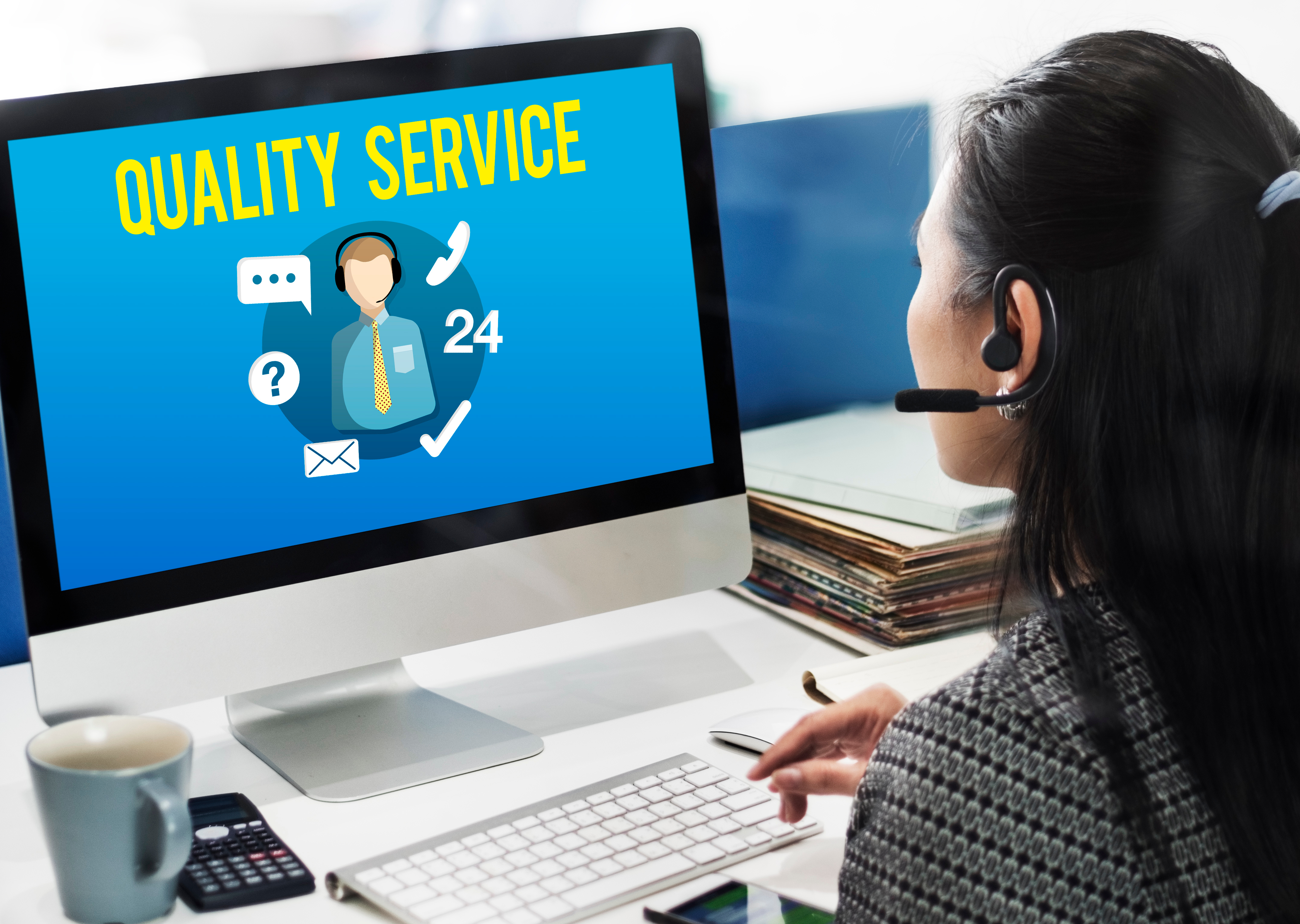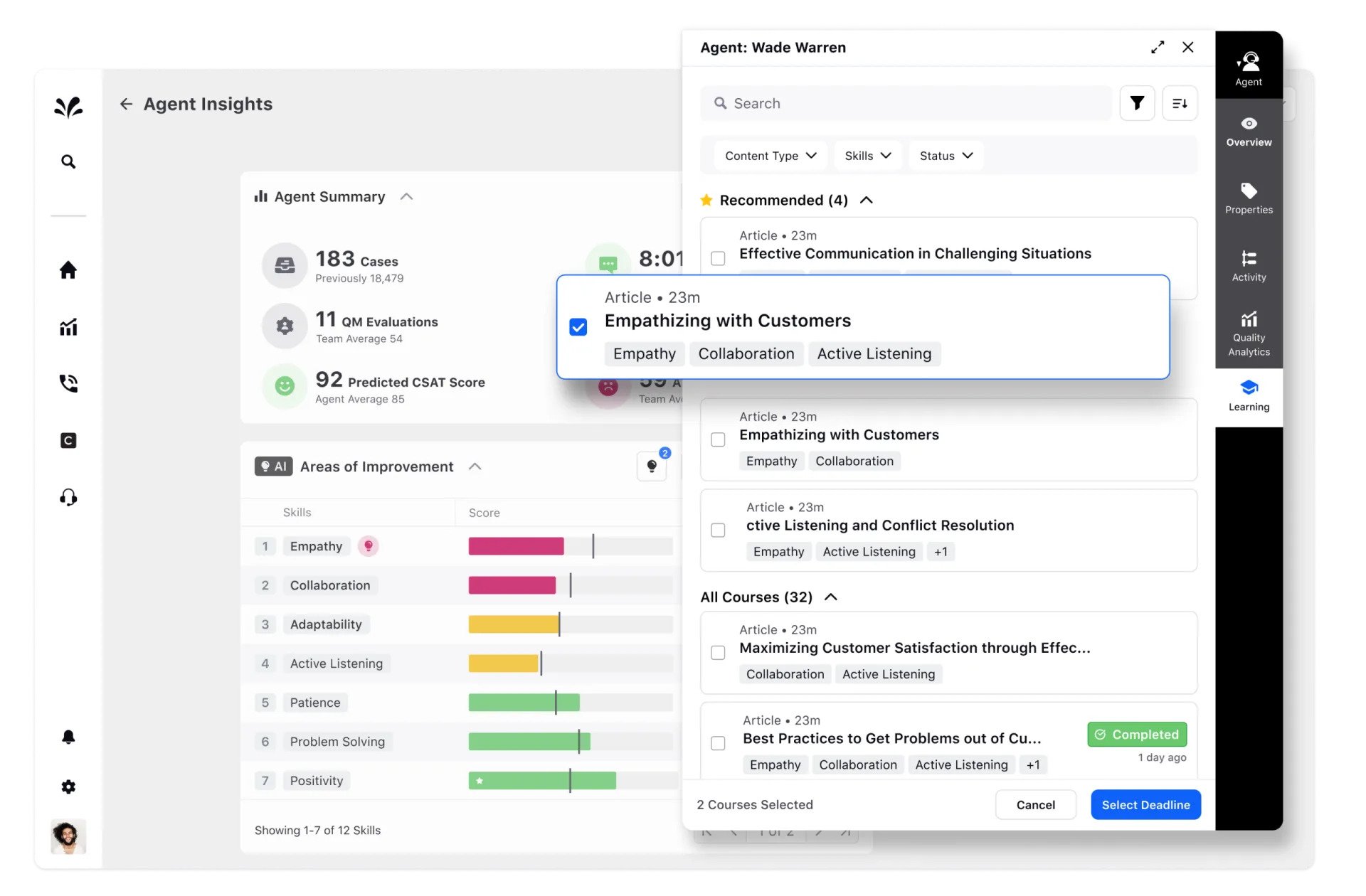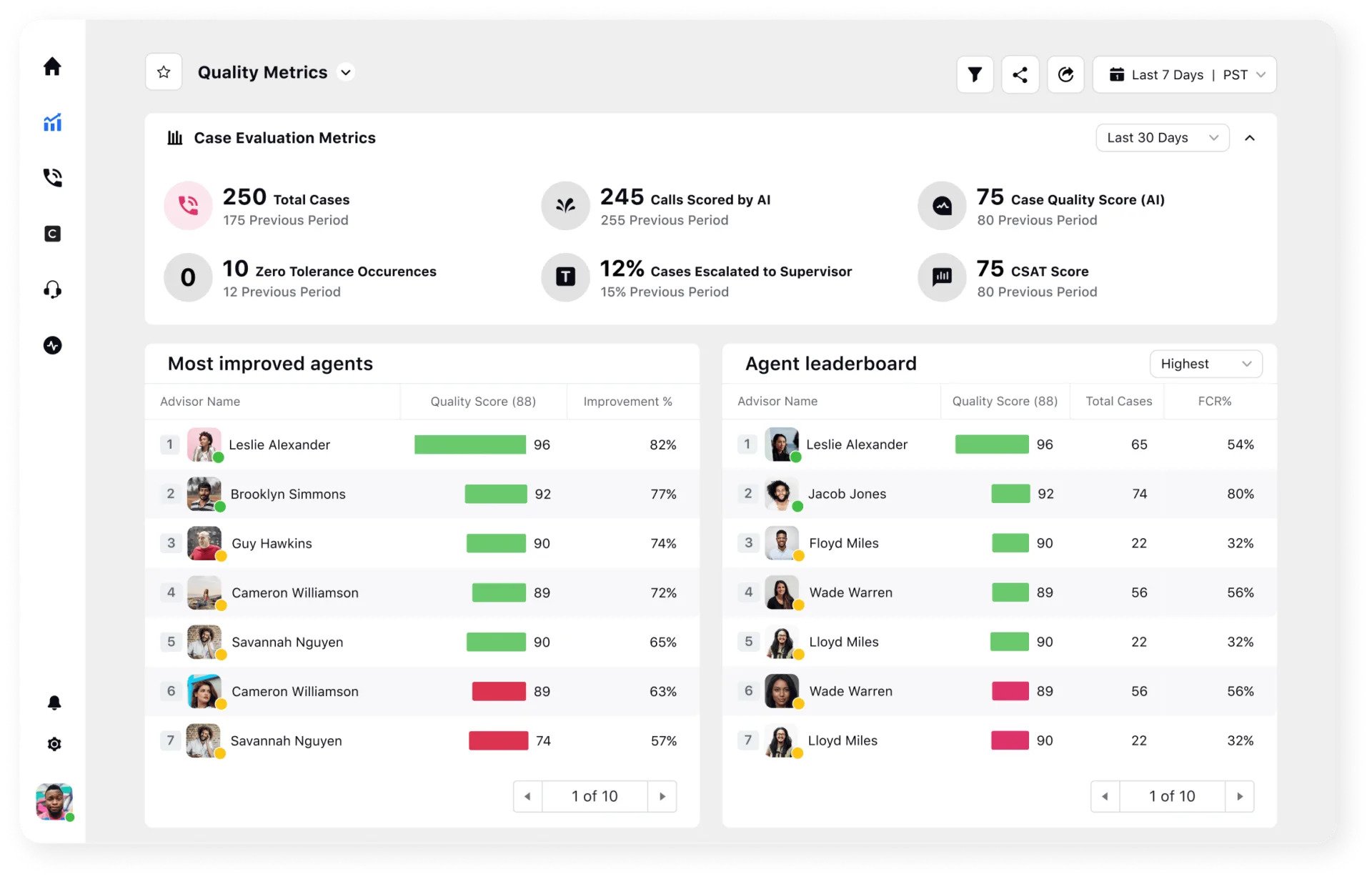Once too often, you'd have heard the phrase "This call may be recorded for quality assurance purposes" when you call a business call center. Haven't you?
So, what does call center quality monitoring actually mean? And how does recording a call - or several - help uplift it?
That's where the concept of call center quality assurance comes into play.
If the term is new to you, let us begin by stating that quality assurance in call centers can make or break your business. It has the potential to boost your agent productivity, customer satisfaction and call center ROI in one masterstroke.
Interested in learning more?
Then, read on. This guide will explore various aspects of quality assurance in call centers, including its importance, key components, implementation steps and best practices.
What is quality assurance in call centers?
Quality assurance (QA) in call centers is a systematic process that ensures your service quality adheres to the established quality standards within a call center environment.
It involves setting benchmarks and guidelines to evaluate and improve the performance of call center agents. QA focuses on maintaining consistency, professionalism and customer satisfaction in every customer interaction. It aims to provide real-time feedback to your agents and foster a culture of continuous improvement in your call center.

Investing in quality assurance in a call center can boost performance by:
Developing quality guidelines and standards
Ensuring agents fulfill compliance requirements
Evaluating agent performance in real-time with call monitoring
Tailoring feedback and coaching systems to each agent's unique needs
Still wondering if your call center needs QA processes at all? Here are its top six benefits for your business that will quell your doubts.
Importance of quality assurance in call centers
Call center QA modules like call scoring, call monitoring and agent coaching can turn around your call center's performance. Here's how.
1. Ensures quality customer support
Robust QA systems can detect customer sentiment in calls via call monitoring and customer surveys. By analyzing customer data, they can uncover issues that customers are commonly facing with your product usability and support quality, among other things. You can use these insights to strengthen your customer support systems.

2. Promotes regulatory compliance
Quality assurance in call centers ensures regulatory compliance through quality monitoring and evaluation. In this, agent-customer interactions are assessed against specific criteria around legal compliance. This helps you safeguard your customers' interests and your call center's reputation.
3. Improves agent performance
Ongoing call monitoring in call center QA uncovers your agents' weak and strong aspects. With targeted coaching and feedback, supervisors can hone their agents' skills so they can handle customer interactions confidently. When your team is able to meet their service level agreements (SLAs) efficiently, their productivity and overall morale are improved.
Point to note: Quality assurance can be made easier with AI-powered insights into agent performance. You get granular information on each agent, enabling you to compare and asses agents objectively on important customer service qualities such as active listening, empathy and problem-solving.

4. Enhances operational efficiency
Quality assurance identifies inefficiencies, streamlines processes and optimizes call handling. This ultimately leads to enhanced operational efficiency, reduced costs and improved overall performance.
5. Saves operational costs
Enhanced operational efficiency can help lower your costs and transform your call center from a cost center into a revenue driver.
6. Boosts your brand health
Satisfied customers demonstrate high net promoter scores (NPS) and tend to become loyal advocates who push your brand on public platforms and forums. A happy audience may help spread positive word-of-mouth that boosts your brand image.
Interesting read: How to improve the net promoter score of your brand
Top frameworks of QA
You may agree now that quality assurance in call centers is indispensable. But how to go about it?
Typically, QA can be implemented and evaluated using three frameworks, with an aim to achieve either operational or tactical or strategic efficiency.
Regardless of the framework, implementing QA in call centers can be broken down into three broad steps:
Data selection
Scoring mechanism for performance evaluation
QA result implementation
Now, let's dive into each framework, from the most basic to the most advanced.
Operational framework
The most popular framework for call center QA programs, the operational framework helps you evaluate performances daily instead of monthly. It identifies the agents whose performance could improve with some finetuning through upskilling programs or training.
The operational framework requires you to monitor the below-mentioned KPIs through online tools and evaluate the data regularly:
Inbound and outbound call volume
First Call Resolution (FCR) rate
Average call duration
Sales and service quota supervision
Rate of calls missed by an agent, transferred to another agent or sent to voicemail.
Dive deeper: Top Contact Center Metrics to Track in 2023
You may notice that the operational framework has a narrow scope that limits its application only to basic QA purposes. That’s why it is usually employed for short-term resolutions. For more robust QA, you need deeper insights via the next framework, tactical.
Tactical framework
This framework uses the trending data for the month or the year to offer actionable insights about adapting the QA process. It focuses on tactical self-awareness, growth and scalability. It spots the true causes behind failed customer service cases, like jammed workflows and knowledge gaps. It promotes improved training to reduce agent turnover and enhance customer satisfaction.
With a tactical approach to QA, you can:
Identify the reason for low CSAT score
Spot gaps in your call center agent training
Optimize your team workflows

For the tactical framework, a unified CXM platform that enables you to watch over your live and virtual agents’ performance in real-time and allows them to score their customer interactions is highly useful.
Some tactical tools include:
Customer satisfaction surveys
Agent self-scoring module
Call center supervision
Workflow optimization
Trend forecasts
Call recording and transcription
Intelligent analytics, like work clouds
Tactical methods like restructuring and repeated training sessions consume more time than the operational framework but provide a more stable solution that lasts longer.
Strategic framework
This is the topmost evolutionary stage for the QA process. It focuses on the macro-view of the business, a top-down approach and long-term goals. It dives deeper and helps you identify the impact of customer service scores on sales, NPS and customer loyalty.
It answers questions like:
How does customer service impact the business end goals?
How can you change the customer service strategy to increase loyalty and customer retention?
How can you improve employee retention in the call center?
Best practices for call center quality assurance
The QA framework you pick will largely govern your call center’s performance. However, there are some best practices that can be deployed to ensure a better outcome.
1. Use call center QA software
Reliable call center quality management and assurance software can automate tasks, collect and analyze data and monitor and record agent-customer interactions. It can track predefined quality metrics and send alerts to the manager in case of SLA breaches.

While buying call center QA software, ensure it carries these vital modules and features:
Automated call recording and surveys
Call and speech analytics
Omnichannel support
Performance metric monitoring
Customizable agent scorecards
Caller screen pop-ups
2. Pick the right QA framework and update it regularly
A clearly-defined framework smoothens communication flow across teams in your call center. Your agents perform better when they know what their KPIs are and how often they are being monitored.
In addition, updating the framework with your evolving needs and customer feedback boosts overall call center productivity.
3. Balance automated and manual data collection
Manual data collection involves customer surveys, polls and call monitoring by a supervisor in real time. It can be done in varied ways including:
Random sample monitoring: When the supervisor picks calls at random to monitor.
Targeted monitoring: Specific calls from certain agents or topics of conversation are picked for quality inspection.
Analytics-driven monitoring: Uses software features like voice analysis to map specific keywords and phrases and pick those calls for quality supervision.
But this technique consumes a lot of time which your supervisors may not always have. Moreover, manual data collection is prone to human errors.
Alternatively, automated data collection drives speed and accuracy. Being tool-driven, it can generate reports with actionable insights. It helps monitor metrics like customer service quality, call abandonment rate and peak hour call volume, among others.
4. Plan a realistic, consistent evaluation schedule
This can be effectively done in two parts: first, by scheduling evaluations, calibrations and data analysis, and second, by scheduling per your call center agents’ availability.
QA calibration is necessary to understand how call center processes are faring. The schedule needs to be realistic and consistent for a balanced distribution of activities.
Consistency is key to collecting enough customer interaction data that make a sizeable dataset for quality monitoring.
5. Consistently share feedback with the team
QA demands a high level of collaboration and participation from the whole team. Your agents are pivotal to call center functioning and involving them in evaluations is crucial.
To that end, managers ought to provide regular feedback to their teams and encourage them to learn from each other. Techniques like leaderboard and gamification can be leveraged to share feedback in a fun, interactive way.
The bottom line
A well-thought-out call center quality assurance program enhances customer experience, contributes to business growth and improves your brand image. That said, effective QA calls for seamless collaboration between different teams and business functions. That's where a unified quality management solution like Sprinklr can make a difference.
Sprinklr's advanced AI uncovers significant gaps in your processes and performance, unlocking new possibilities to elevate your service standards.
Interested to learn more?
Schedule a demo with our experts to experience a next-generation customer support solution first-hand.
Frequently Asked Questions
Quality assurance focuses on an SOP or a standards checklist to guide how to deliver a service and prevent mistakes. Quality control is mainly done for product development and focuses on correcting issues like product defects.
Thank you for contacting us.
A Sprinklr representative will be in touch with you shortly.
Contact us today, and we'll create a customized proposal that addresses your unique business needs.
Request a Demo
Welcome Back,
No need to fill out any forms — you're all set.



